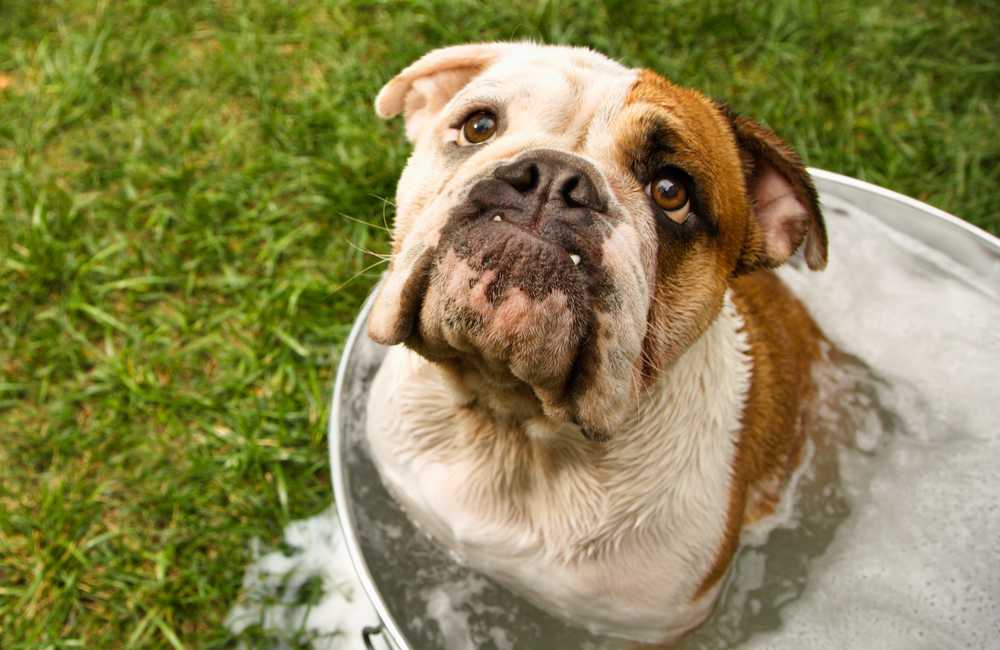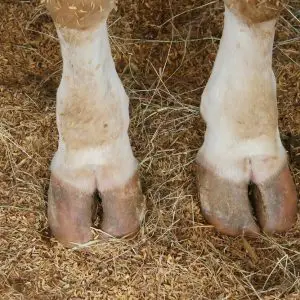
We’ve all heard the age-old saying, ‘never feed a dog chicken bones’. But how much truth is really in it?
Are you searching for a natural treat you can give your dog? Or want to explore treats with nutritional benefits? Maybe you’ve come across many people saying chicken wings are a great option, but feel hesitant due to what you’ve heard?
In this article, we will explore the different chicken wing options, and determine whether the age-old saying is true or not, so that you can make an informed decision whether chicken wings are right for you and your dog.
Key facts
Chicken wings can be given as a treat, raw or dehydrated. They usually include just the wing tips, but sometimes include the wingette and drumette.
Chicken wings are great for improving dental health and joint health, as well as being full of calcium, vitamin B’s and protein.
There are quite a few risks associated with chicken wings, including diarrhoea, acute polyradiculoneuritis, and choking.
To minimise the risks, supervise your dog at all times, and source your chicken wings from reputable suppliers who ensure their chicken products are pathogen free.
Chicken feet, antlers, rabbit ears and ostrich tendons are good alternatives to chicken wings.
What are Chicken Wings for Dogs?
Chicken wings come from broiler (meat) chickens, which have been slaughtered at a young age. The age of slaughter varies slightly, with intensively reared chickens being slaughtered at around six weeks old, free range chickens at around eight weeks old, and organic chickens at around 12 weeks old. Chickens are sexually and skeletally mature at around five to six months of age, and therefore since they are slaughtered younger than this age, their bones are generally softer than mature chickens.
The structure of a chicken wing can vary considerably. They are generally divided up into three parts: the wing tip, the wingette (or flap), and the drumette. Each contain bones, but the closer you get to the body (the further away from the wing tip), the bigger and thicker the bones are. It is possible to buy chicken wings for dogs which contain all three parts, or just the wing tip and wingette, or just the tip.
If you purchase raw chicken wings for raw food feeding, they’re most likely to come as an entire wing, or at least the tip and wingette. However, if you’re interested in chicken wing treats, which are usually dehydrated, the tips are often the only part which is used.
Dehydrated wing tips only contain a tiny bone, and dehydration in a commercial dehydrator, at a low temperature makes the bone become crumbly. It is also possible to dehydrate chicken wings in a home dehydrator, however this is more dangerous, as they are often not powerful enough to fully dehydrate a wing, leaving the bone susceptible to splintering, rather than crumbling.
Chicken wings can vary in size, obviously depending on what part of the wing is used. The most popular treat option, the wing tip, is usually 5-10cm in length and 5-10g in weight.
Chicken wings, both raw and dehydrated, can come from a variety of sources. Most produced in the UK are likely to be free-range, since the welfare of barn-reared chickens is considered extremely poor and is being phased out. However, don’t assume that just because the product is a British product, that the chickens came from the UK. Carefully read the packaging to determine where the chickens have come from, as chicken welfare overseas is often considerably worse than the UK.
Benefits of Chicken Wings for Dogs
Key benefits
Joint Health
Chicken wings are a great source of glucosamine and chondroitin.
Dental Health
Crunchier than typical dental chews, giving a better end result.
Chicken wings are nutritious for dogs and provide multiple health benefits, such as improving joint health and dental health.
Joint Health Benefits of Chicken Wings
Chicken wings are full of connective tissue, ligaments and cartilage, which are a great source of glucosamine and chondroitin. These are precursors for the components which make up joint cartilage and joint fluid, thereby improving the quality of both. They have been clinically proven to improve pain, weight-bearing on afflicted limbs and the severity of the condition. This is particularly important for dogs which are suffering from osteoarthritis, or who heavily use their joints, such as active, working or sporting dogs.
That said, chicken wings don’t always contain high enough quantities of these compounds alone to make a significant difference, and with all natural products, the quantities are likely to vary from product to product. Therefore, if your dog has serious joint issues, it is probably better to use a scientifically formulated joint supplement with proven and consistent quantities of glucosamine and chondroitin. In addition to this, joint supplements of any sort are not a substitute for seeking veterinary attention to help improve your dog’s mobility.
Dental Health Benefits of Chicken Wings
The bone(s) in the chicken wing is the main source of calcium, but it also has another benefit. When your dog crunches through the bone, it provides an abrasive action on the surface of the tooth, resulting in removal of plaque and left over food material. This is a similar concept to that of dental chews, but chicken wings are significantly more natural, and crunchier, resulting in a better end result. In addition to this, they are much lower in calories than dental chews.
Nutritional Information for Chicken Wings
Nutrients
Chicken wings are highly nutritious and good for dogs. They are naturally a single ingredient food, which is high in protein. They are also low in cholesterol. Chicken wings also contain some healthy minerals and vitamins, such as high levels of calcium and vitamin B’s. Calcium promotes healthy, strong bones, and vitamin B’s help support the body’s natural metabolism processes.
As a result of this nutritional make up, your dog will have a great protein source, which is important for DNA synthesis, hormone production and producing of strong muscles. In addition to this, it is a single protein source, meaning that if your dog has food allergies, but you know chicken is not one of them, you don’t have to worry about a reaction happening.
Calories
Calorie content is highly variable, depending on the type of wing you buy, how big it is, and what process it has been through. Raw wings are approximately 2880 kcal/kg, which in comparison to other dog treats, is neither high nor low in calories. In addition to this, despite many claims that chicken wings are low in fat, they are actually mid-range. So unfortunately they are not suitable treats for dogs who are needing to lose weight.
Feeding Guide
This very much depends on your dog’s size and diet. If you are feeding your dog a raw food diet, then it is best to consult your veterinary nutritionist to get an idea of how to balance the diet appropriately with the use of chicken wings. If you are just feeding chicken wings as a treat, treats should not comprise more than 10% of your dog’s diet.
Disadvantages & Risks of Chicken Wings for Dogs
Don’t Feed Cooked Bones
Chicken wings are fairly safe for dogs provided the wings are not cooked. Fresh or dehydrated chicken wings comes with a small choking risk so it’s suggested they are fed under supervision.
Unfortunately, the answer is not as clear as black and white. Chicken wings are certainly not risk-free, but under certain situations, they can be eaten by your dog safely.
Chicken wings contain bones, and as long as they are not cooked, they should not pose any risks. Cooked bones can shatter and cause internal damage to your dog’s intestines. However, raw bones (particularly non-weight bearing bones such as wings) are soft. Bones which have been commercially dehydrated at a low temperature tend to crumble, so these are also fine. However, bones dehydrated in home dehydrators or ovens, or bones which are cooked, tend to splinter and should be avoided at all costs.
When your dog is eating chicken wings, he needs to be carefully monitored. Chicken wings are small in size and can easily be eaten whole by accident. This shouldn’t cause a blockage if it reaches the stomach, because chicken wings are digestible, however, it can get stuck in the throat and cause damage or choking.
Some owners suggest holding onto one end to ensure your dog crunches it before swallowing, however this could pose more problems if your dog panics, as he might think you’re going to take it away, which encourages him to eat it faster than usual. In the end, what is best is careful supervision.
Chicken Wings for Puppies

Chicken wings are not suitable treats or additions to the diet for puppies. Since they are high in calcium, they can upset the balance of what a commercial, balanced puppy food would offer, and as a result, cause problems with bone growth. In addition to this, the bones would pose more of a choking risk for puppies who might not be able to adequately crunch through them yet.
Some people suggest chicken wings are great starter foods for puppies who will go on to be fed a raw food diet. While this is true, puppies shouldn’t be transitioned to a raw food diet until they are fully grown for the reasons mentioned above.
Alternatives to Chicken Wings
Liking the sound of chicken wings by not quite sold on them? Why not try one of these alternatives?
- Chicken feet: These are similar to chicken wings and have the same dental and joint health benefits.
- Antlers: Antlers provide an excellent alternative if your dog is overweight and needs a low calorie, low fat option. Since antlers are gnawed on and not ingested, they help provide abrasion to the surfaces of the teeth without ruining your dog’s diet.
- Ostrich tendons: Tendons are chewy and great for cleaning teeth. They are also full of connective tissue, which also contains glucosamine and chondroitin to improve joint health. They are better suited to larger dogs, as they are very big.
- Rabbit ears: If natural is what you’re after, rabbit ears are a great alternative. They are excellent for your dog’s teeth, and don’t smell or leave greasy stains. They can be found dehydrated or air-dried to preserve the nutrients. They are also a little lower in fat than chicken wings, and supposedly take longer for a dog to finish too. They often come with hair on though, which some people praise as a natural dewormer, but for many people, it can be a little creepy.
FAQs
Chicken wings are quite good for dogs. They contain lots of compounds associated with healthy joints and are also an excellent treat for dental health.
How many chicken wings a dog can have depends on a number of factors including whether you are feeding fresh chicken wings or dehydrated chicken wings, as well as the size and health of your dog. Consult your dog nutritionist if you are raw feeding. If you are treating, remember that treats should not make up more than 10% of your dog’s diet.
For the most part, yes, chicken wings are safe for dogs provided they have not been cooked. As with quite a lot of natural treats, chicken wings do carry a mild choking risk, so it is best to supervise your dog when feeding.
Chicken wings are generally low odour and not particularly greasy, so they aren’t unpleasant to have in the house. However, chicken (especially raw chicken) can carry more bacteria on it than other meats, and therefore it is unhygienic to have on the floor. As a result chicken wings are definitely better as an outdoor treat, or eaten somewhere that can be cleaned easily.
Raw chicken is commonly contaminated with bacteria, especially Campylobacter spp., E.coli, and Salmonella, and therefore if it is not kept cool or frozen, bacteria can rapidly multiply and cause gastrointestinal infections and diarrhoea. These infections can also affect people so it’s important to maintain good hygiene when handling chicken products, and wash hands and work surfaces frequently.
Chicken is also a protein which many dogs have allergies too. Sometimes this manifests as diarrhoea, while other times it manifests as itchy skin. Therefore, if your dog seems sensitive to commercial food with chicken in, it is best to avoid chicken wings too.
Blockages can be life threatening. Luckily, chicken wings are digestible if they reach the stomach, however, if they are poorly chewed or swallowed whole, they may cause blockages in the throat. This can result in breathing difficulties and trauma. Therefore, always ensure your dog suitably chews the chicken wings before swallowing, and if he doesn’t, take them away.
Chicken wings are harvested from chickens which have been bred for meat. Chicken wings for humans are usually sold without the tips, and therefore these dehydrated tips are known as by-products. In many cases, they are either discarded or ground up into dog food products. Since chicken meat production is popular worldwide, chicken wings can be harvested all around the world from varying degrees of welfare. That is why it’s always important to try to buy from a local, reputable supplier.









